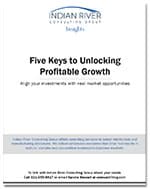Sales goals and budgets should be the result of a strategic planning process, not a replacement.
A strategy is a plan for winning in the market. It is fundamentally about how. But a surprisingly high percentage of companies think they have a strategy when, in actuality, all they have are numeric goals. Hitting $5 billion in revenue, for example, is a goal – not a strategy.
When you break down that $5 billion goal into specific regions, territories or product groups, it may feel like you’re getting closer to a strategy, but you have only dissected the original goal. Spreadsheets can’t give you a strategy for market differentiation and increased profits. They do not show how all the precise numbers will be reached.
This emphasis on numbers can actually be counter-productive when it creates a false impression of strategic clarity. If you haven’t developed your company’s value creation levers you’re delegating your strategy to your sales force.
There is absolutely nothing wrong with expecting sales reps to sell. But it is unrealistic to expect them to evaluate market opportunities, estimate lifetime customer potential, develop value propositions and so on.

Sales goals and budgets should be the result of a strategic planning process, not a replacement for it. Best-in-class distributors design their strategies first, then structure their sales forces appropriately to implement them.
They don’t let their reps figure it out for themselves. These companies have evolved from a self-directed sales force to one that is management- and strategy-directed.
Read more about developing a market access strategy is this free download from IRCG.

